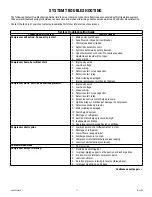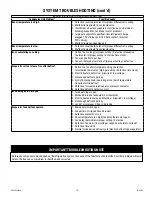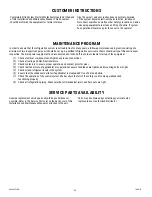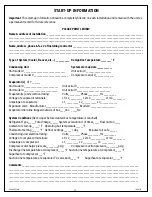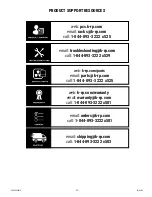
K90-KPCS-IM-2
18/04/22
- 9 -
EVACUATION AND DEHYDRATION
When the system is completely free of refrigerant leaks, an
evacuation of the entire system should be completed by using a
“high vacuum” pump. This evacuation, if completed correctly, will
ensure long life for the system as well as elimination of moisture
and non-condensable gas problems.
Moisture problems causing
compressor failure will void warranty. Follow the recommended
procedure carefully.
Use only a “high vacuum” pump capable of drawing a vacuum of
100 microns. Change the vacuum pump oil frequently. Gauges or
vacuum measuring instruments should be suitable to measure
conditions at any stage of the process in order to give the
operator indications of progress. For specific recommendations,
refer to the vacuum pump supplier for these instruments.
Copper jumper lines should be used to interconnect both high
and low-pressure sides of the system. These lines should be at
least 3/8” O.D. in order to handle the light density vapor at high
vacuum obtained at completion of operation. Lines smaller than
3/8” O.D. will slow down the process considerably as well as
make final system vacuum questionable. Double evacuation with
a “sweeping” of dry nitrogen is recommended. First evacuation
should be to at least 1,500 micron. When this point is reached,
break the vacuum with refrigerant or dry nitrogen to melt any
moisture, which may have frozen during the first vacuum stage.
Reclaim any tracer gas from the system and re-evacuate to a final
vacuum of at least 500 microns. With this degree of evacuation,
all moisture and non-condensables should be removed from the
entire system.
Do not use the refrigeration compressor to evacuate the system. Never start the compressor or perform a megger insulation test while
the system is in a vacuum.
CAUTION

















